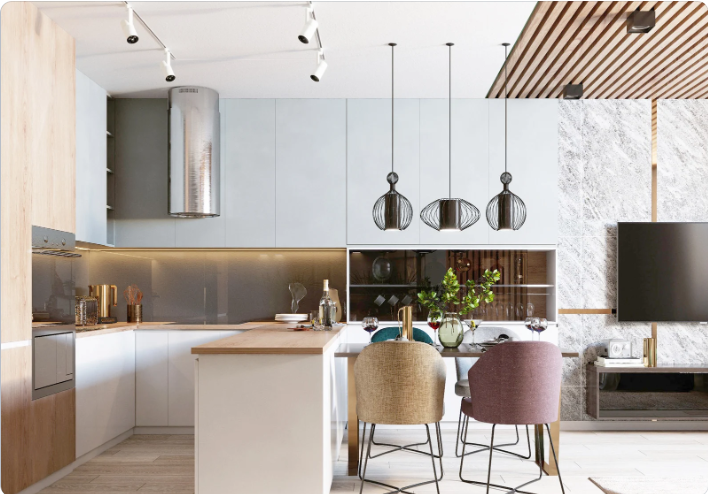In the saturated world of interior design, standing out requires determination, perseverance, and a unique approach. The competition is fierce, with many talented professionals vying for the best projects. To make a name for yourself and succeed in this competitive field, you need to employ clever strategies and innovative ideas. This article will provide insights and practical tips to help interior designers distinguish themselves and thrive.
Invest in a Website
In today’s digital age, having a robust online presence is essential for any business, and interior design is no exception. A well-designed website serves as your virtual storefront, showcasing your work and attracting potential clients. However, creating a website is not enough; it must be thoughtfully conceptualized and executed to reflect your brand and expertise.
- Professional Web Design:
- Cost: $500 – $5,000 depending on complexity
- Details: Collaborate with a reputable web designer to create a modern, sleek, and user-friendly website. While templates are available online, a custom design will set you apart and provide a unique online portfolio that highlights your best projects.
- High-Quality Photos:
- Cost: $200 – $1,000 for professional photography
- Details: Your website should feature high-resolution images of your work. Good quality photos are crucial as they create a strong first impression and visually demonstrate your design skills.
- Effective Domain Name:
- Cost: $10 – $20 per year
- Details: Choose a short, catchy, and easy-to-remember domain name. Ideally, it should reflect your brand and be consistent with your social media handles.
Social Networking
Social media platforms are powerful tools for promoting your business and engaging with potential clients. With millions of users spending significant time on social media daily, these platforms offer a cost-effective way to reach a large audience.
- Platform Selection:
- Details: Focus on platforms that best showcase your work, such as Instagram, Pinterest, and YouTube. Instagram is particularly effective for visual content, while YouTube can be used for video tours and design tips.
- Consistent Branding:
- Details: Use the same name across all social media platforms for consistency. This makes it easier for people to find and remember your brand.
- Engaging Content:
- Details: Regularly post high-quality content that resonates with your audience. This can include photos of your latest projects, behind-the-scenes videos, design tips, and industry news. Engage with your followers by responding to comments and messages promptly.
Physical Portfolio
While an online portfolio is essential, a physical portfolio is equally important for face-to-face meetings with potential clients. A well-organized, professional portfolio can leave a lasting impression and help you secure projects.
- Content:
- Details: Include high-quality images of your best work, along with detailed descriptions of each project. Ensure your portfolio is clean, updated, and reflects your design style and expertise.
- Presentation:
- Details: Invest in a high-quality binder or presentation book. The physical appearance of your portfolio should be as polished and professional as your designs.
Believe in “Word of Mouth”
Word of mouth is a powerful marketing tool, especially in service-based industries like interior design. Your network of family, friends, and satisfied clients can help spread the word about your services.
- Leverage Your Network:
- Details: Ask your family and friends to share your work and recommend your services to their contacts. A personal recommendation can be highly influential in attracting new clients.
- Client Testimonials:
- Details: Collect and showcase testimonials from satisfied clients on your website and social media. Positive reviews build trust and credibility, encouraging potential clients to choose your services.
Continue Learning
The interior design industry is constantly evolving, with new trends, technologies, and techniques emerging regularly. To stay competitive, you must commit to continuous learning and professional development.
- Attend Industry Events:
- Cost: $100 – $1,000 depending on the event
- Details: Participate in seminars, conferences, and conventions to stay updated on the latest industry trends and network with other professionals.
- Read and Research:
- Cost: Variable, depending on the resources
- Details: Subscribe to industry magazines, read design books, and follow influential designers online. Keeping up with the latest publications can provide inspiration and new ideas.
- Online Courses:
- Cost: $50 – $500 per course
- Details: Enroll in online courses to learn new skills or enhance existing ones. Many reputable institutions offer courses in various aspects of interior design, from technical skills to business management.
Additional Tips for Success
- Develop a Niche:
- Details: Specializing in a particular niche, such as sustainable design, luxury interiors, or small space solutions, can set you apart from the competition and attract specific client types.
- Build a Strong Network:
- Details: Establish relationships with other professionals in related fields, such as architects, builders, and real estate agents. These connections can lead to referrals and collaborative opportunities.
- Offer Exceptional Customer Service:
- Details: Providing excellent customer service can lead to repeat business and referrals. Be responsive, attentive, and professional in all client interactions.
- Stay Organized:
- Details: Use project management tools to keep track of deadlines, budgets, and client communications. Staying organized ensures projects run smoothly and helps maintain client satisfaction.
- Market Your Services:
- Details: Invest in marketing efforts, such as Google Ads, social media advertising, and local print ads. Effective marketing can increase your visibility and attract new clients.
Conclusion
Standing out in the competitive field of interior design requires a combination of creativity, professionalism, and strategic marketing. By investing in a professional website, leveraging social media, maintaining a strong physical portfolio, and continuously learning, you can differentiate yourself from the competition and build a successful career. Remember, determination and perseverance are key. Love what you do, go the extra mile for your clients, and follow these tips to ensure your success in the interior design industry.


Recent Comments